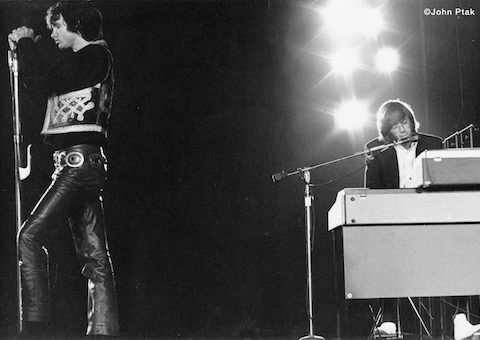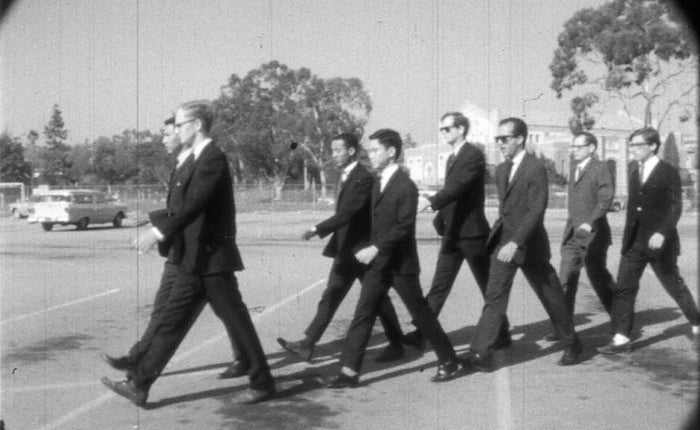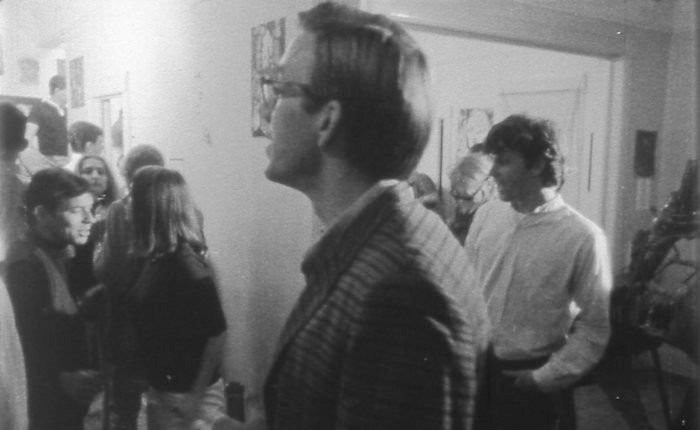
I wrote a blog last fall about UCLA Film & Television Archive’s project to survey, preserve and show student films made at UCLA over the decades, to celebrate the 100th anniversary of the university. Since then, we have identified well over 1,000 student films in our collections, many, many more than indicated in my previous blog. Indeed, after carefully cross-referencing graduation lists with our online catalog, we realized that large numbers of students had deposited electronic copies after the university relinquished copyright claims in the late 1960s. Among the many films we were able to identify, we found no less than five films associated with The Doors, even though Jim Morrison’s infamous student film (see Oliver Stone’s film for details) remains lost.
Not many people know that the world-famous rock group, The Doors, got their start at UCLA, when Jim Morrison and Ray Manzarek were film students between 1961 to 1965. Ray graduated with a master’s degree and Jim with a bachelor’s degree, both in 1966. While The Doors formed in the summer of 1965, after both members had finished their course of study, the band made one of their first public appearances at a student film screening in December 1965 at Royce Hall, “Op, Pop & Kicky Flicks,” accompanying an eight-minute silent film directed by Ray Manzarek: Who and Where I Live (1965). That film, too, remains lost. But two other films in that program survive: Alexander Prisadsky’s Five Situations for Camera, Recorder and People (1965) and Ronald Raley’s Patient 411: A Progress Report (1965).
The Archive has also saved two other Ray Manzarek-directed student films, Evergreen (1965) and Induction (1966). All of the films are important both to the history of UCLA film school, as well as to the history of The Doors. Finally, a full-bearded Manzarek co-starred in The Wino and the Blindman (1965), directed by José Luis Gonzalez, which, like Evergreen, was screened in May 1965 in a UCLA student film program, “New Film Things.” These surviving titles are now the subject of a UCLA Spark crowdfunding campaign to fund their restoration. Depending on how much the Archive actually raises, we will work on them in the following order:

Evergreen
In Manzerak’s Evergreen (1965), a jazz musician (Henry Crismonde) is having an affair with a young art student, but apparently can’t commit to a long-term relationship. The film features intimate scenes between the couple, as well as images of student life. The student is played by Dorothy Fujikawa, who was an art student at UCLA and Ray’s actual girlfriend. A number of scenes were shot in the Venice Beach apartment shared by Ray and Dorothy, who would also co-star in another of Ray’s UCLA films, Induction (1966), and become Ray’s wife in 1967. They remained married until Ray’s death in 2013.

Dorothy Fujikawa in Evergreen
Five Situations for Camera, Recorder and People was produced in March 1965 as part as a UCLA film workshop, directed by Alexander Prisadsky with a soundtrack by Jim Morrison. The film is a montage of surrealistic and highly abstract scenes that metaphorically escalate to ever more violent forms of male behavior, beginning with a group of young men in black suits marching on campus to military march music, then cutting to a bowling alley. In another scene, the group tussles in an overcrowded bathroom, Morrison overdubbing strange animal and machine sounds.

Five Situations for Camera, Recorder and People
Ray Manzarek’s Induction seems to be almost a sequel to Evergreen in that it carries on Ray’s meditation about relationships among young professionals, even quoting from the first film. Strengthening the autobiographical element, the hero of Induction is named Ray and played by Manzarek himself. Here, he is a film student who loses one girlfriend (Kathy Zeller), then finds another, again played by Fujikawa with more scenes at their Venice apartment. In an extended party sequence, Jim Morrison can be seen briefly. Apart from early screenings, the film was shown in 1980 at a special UCLA student film retrospective at Filmex, the Los Angeles International Film Exposition.

Ray Manzarek and Jim Morrison in Induction
Ronald Raley’s Patient 411: A Progress Report (1965), with camera work by Jim Morrison, is a faux scientific film, supposedly made by the “California Institute of Neuropsychiatry.” In the film, an arrogant scientist who also narrates the course of the “treatment,” picks up a Hollywood street hustler and gets him to agree to a program of retraining. Using shock treatment, the patient is taught to loath images of himself as a male escort and love the new personality created in the lab. Morrison’s hand-held camera work is particularly striking, communicating the bad science of what turns out to be a failed experiment.
Hopefully, with adequate funding, all these titles will be available to The Doors fans in the near future.






 Mobile Navigation
Mobile Navigation

